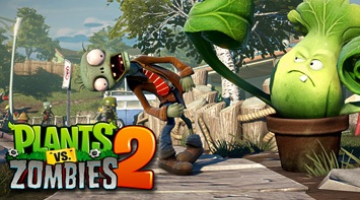Comprehensive Guide to Plants in Plants vs. Zombies 2
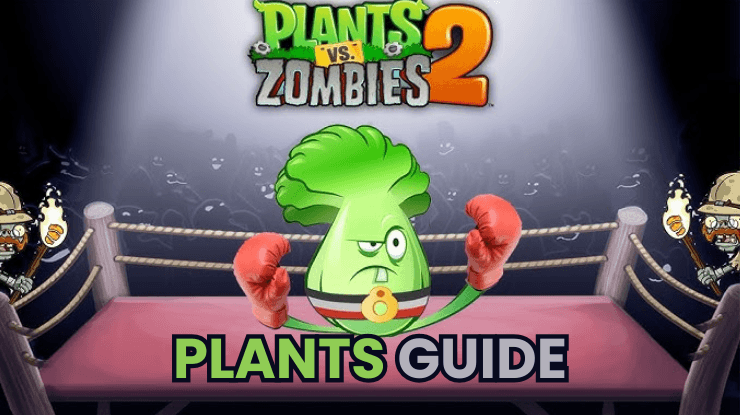
In Plants vs. Zombies 2, players can choose from a wide array of plants, each with unique features, powers, advantages, and disadvantages. This guide categorizes and expands on most of the plants available in the game, providing a thorough understanding of their capabilities.
Common Plants
These plants are easily accessible and form the backbone of any player’s strategy.
– Sunflower: Generates 25 sun per second, making it an essential plant for sun production. By planting Sunflowers early in the game, players can build a strong economy to deploy more powerful plants later. However, they are vulnerable to attacks from zombies and require protection from defensive plants or barriers to survive longer in the game.
– Peashooter: Shoots peas that deal 20 damage per shot. As a basic offensive plant with decent range, it is effective for early-game defense against weaker zombies. While it provides a reliable source of damage, its limited firepower means that it can struggle against tougher enemies or large hordes unless supported by other plants.
– Wall-nut: Blocks zombies for a limited time, providing strong defense with a high health pool that can withstand multiple hits before being destroyed. This plant is crucial for stalling zombies and allowing other offensive plants time to deal damage. However, it cannot attack and will eventually be overwhelmed if not supported by attacking plants.
– Potato Mine: Explodes when a zombie steps on it, dealing significant damage (300) to the first zombie it encounters. This low-cost (25 sun) plant is effective against single zombies and can be strategically placed to surprise unsuspecting foes. However, its slow activation time means that players must anticipate enemy movements carefully to avoid wasting it on weaker zombies.
– Bloomerang: Throws boomerangs that hit zombies twice—once on the way out and once on the way back. This makes it particularly effective against multiple zombies in a line, allowing it to deal damage efficiently. While it serves as a good early-game plant, its effectiveness relies heavily on careful placement; poorly positioned Bloomerangs may miss their targets entirely.
– Iceberg Lettuce: Freezes a single zombie upon planting and can be used strategically to halt stronger foes temporarily. This plant is inexpensive (25 sun) and provides valuable crowd control but has limited effectiveness as it only targets one zombie at a time.
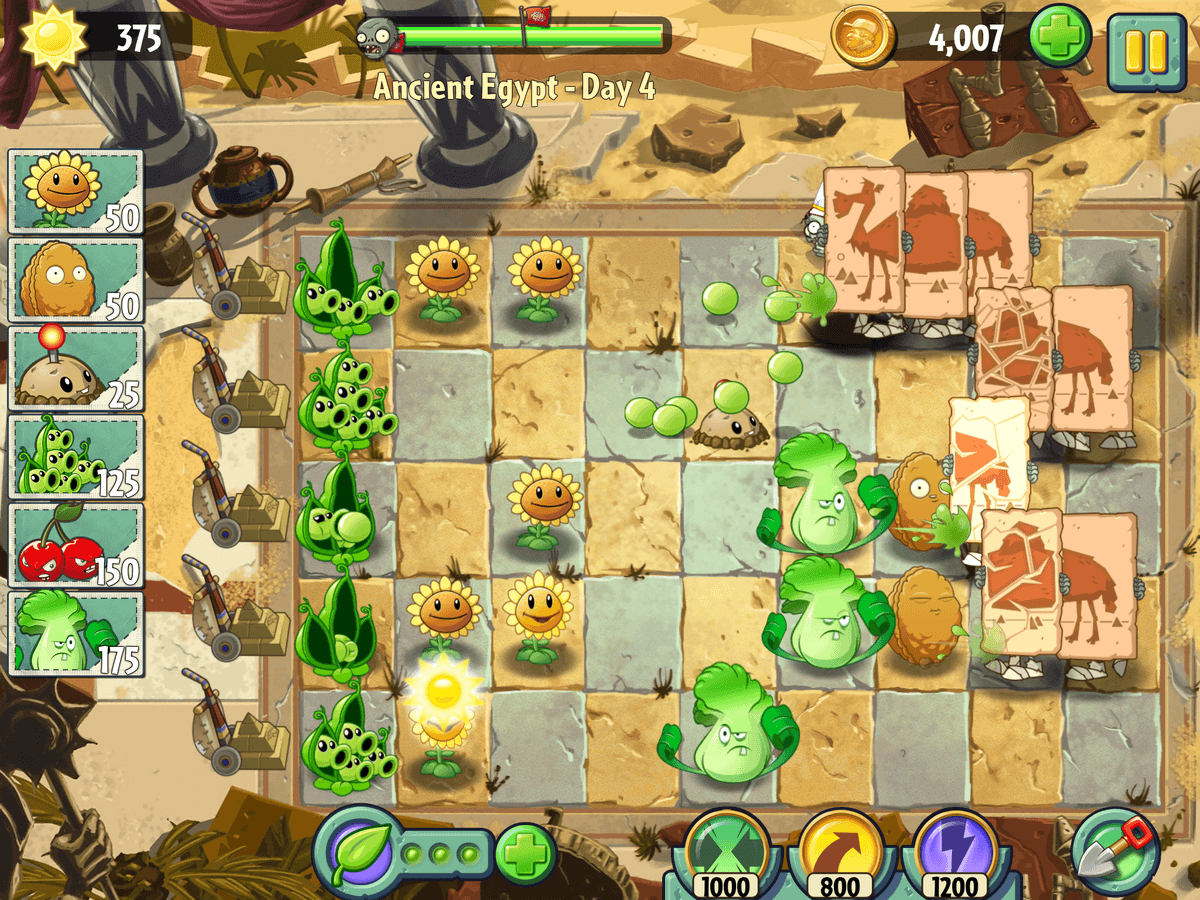
Uncommon Plants
These plants offer more specialized abilities and are slightly harder to acquire.
– Twin Sunflower: Generates 50 sun per second, making it an excellent choice for enhancing sun production significantly over time. Players can use Twin Sunflowers to quickly ramp up their sun generation for deploying higher-cost plants later in the game. However, its higher cost compared to regular Sunflowers means players must balance their economy while ensuring protection against zombie attacks.
– Bonk Choy: Punches zombies directly in front of it with strong melee attacks that deal 50 damage per punch. This plant excels at dealing significant damage to approaching zombies but has a limited range of attack (only directly in front). Players should position Bonk Choy strategically behind defensive barriers like Wall-nuts to maximize its effectiveness while keeping it safe from harm.
– Repeater: Shoots two peas at once, effectively doubling its damage output compared to the Peashooter (40 damage per shot). This makes it a formidable choice for mid-game defense when facing tougher zombies. However, Repeater has a higher cost (200 sun) and remains vulnerable to fast-moving enemies unless properly supported by defensive plants.
– Cabbage-pult: Launches cabbages that deal 30 damage from a distance, allowing players to attack zombies without being directly threatened. While this plant provides decent range and damage output, its projectile speed is slower than other offensive plants, making it less effective against fast-moving zombies unless positioned well behind defenses.
– Snapdragon: Breathes fire across three rows and two columns, dealing area damage in a 3×3 grid pattern. This plant is especially useful against clustered enemies but requires careful placement due to its limited range of attack.
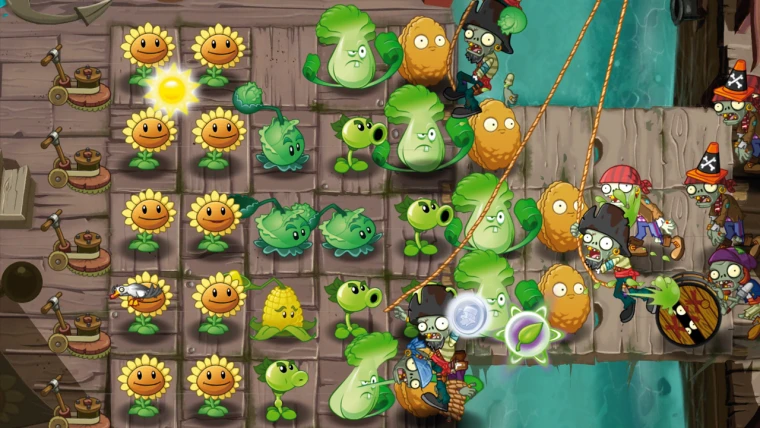
Rare Plants
These plants have unique abilities that make them valuable in specific situations.
– Snow Pea: Shoots frozen peas that not only deal 20 damage but also slow down zombies significantly upon impact. This makes Snow Pea an excellent choice for crowd control, allowing players to manage incoming waves of enemies more effectively. However, its low damage output means that while it can stall enemies, additional offensive support is often necessary for tougher foes.
– Kernel-pult: Launches buttered kernels that can stun zombies for a short duration (3 seconds). It has moderate damage output but excels at crowd control when combined with its Plant Food ability, which can freeze or stun multiple zombies at once. Players should use Kernel-pult strategically to disrupt large groups of enemies while allowing other plants to deal damage.
– Spikeweed: Damages any zombie that walks over it (10 damage per step), making it effective against ground-based foes. Spikeweed can weaken tougher opponents over time and is particularly useful when placed in conjunction with other defensive plants.
– Chili Bean: Explodes after a short delay (5 seconds), damaging all zombies in its lane for 100 damage upon detonation. This area-of-effect attack makes Chili Bean valuable for clearing out groups of weaker enemies but requires precise timing and placement to avoid wasting its potential on single targets or isolated zombies.
– Spring Bean: Bounces zombies back or into water upon activation. It can be used strategically to push back tougher foes or redirect them into hazards like water lanes or traps.
Epic Plants
These plants are powerful and often require more investment to unlock or upgrade.
– Electric Blueberry: Strikes zombies with lightning bolts that deal massive damage (5000) upon activation. Its ability provides excellent crowd control against tough enemies and can clear out large groups when used with Plant Food. However, this powerful plant comes at a high cost (150 sun) and has a longer recharge time (45 seconds), requiring players to plan their strategies carefully around its availability.
– Mega Gatling Pea: Fires multiple peas in rapid succession (up to 10 shots per second), boasting extremely high damage output capable of decimating large groups of zombies quickly. While this plant is highly effective during intense battles, it has a high initial cost (300 sun) and requires time to charge before reaching full firing capability.
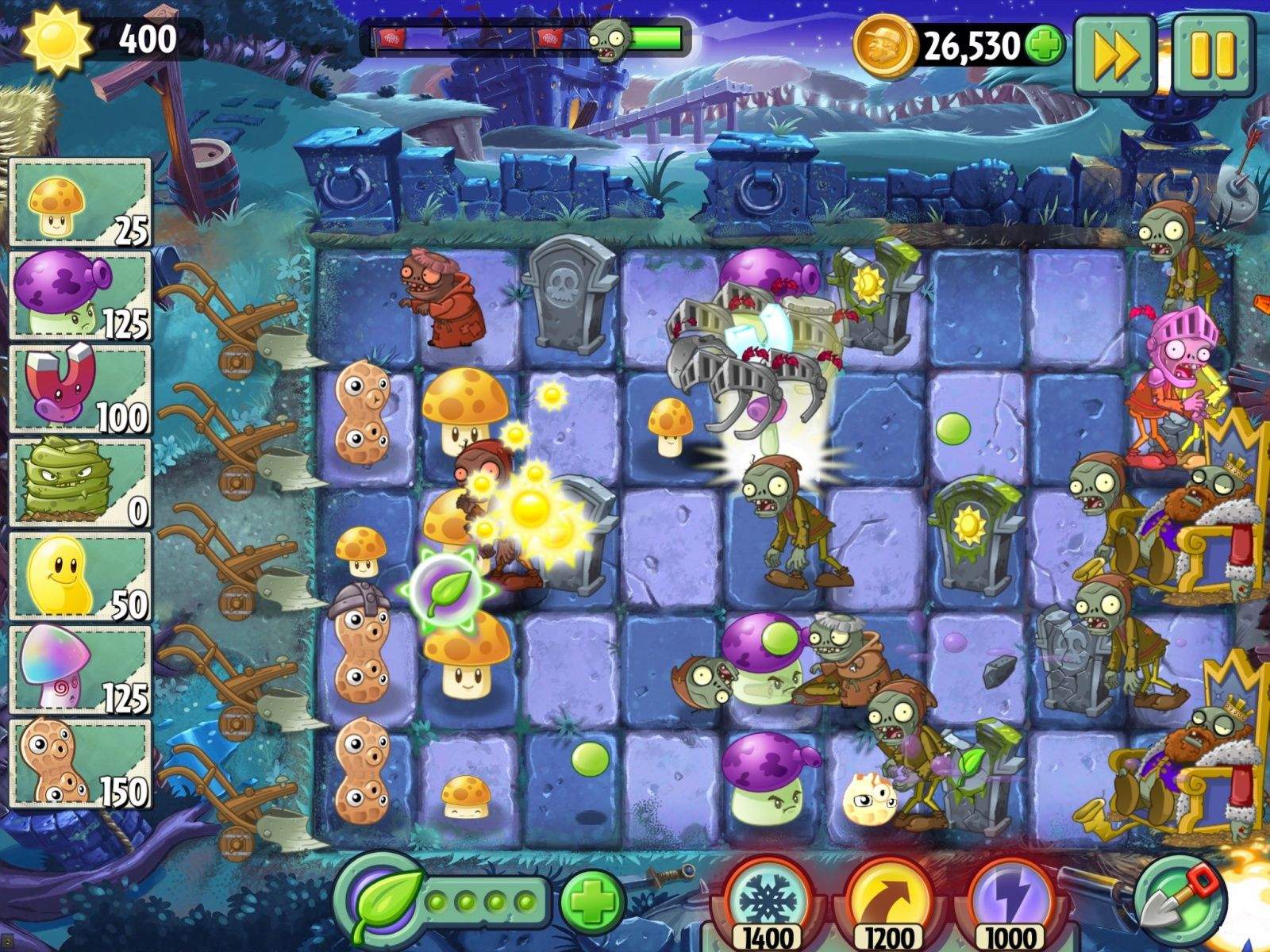
Premium Plants
Premium plants offer unique abilities and often come at a higher cost, either through real money or gems. Here’s an expanded look at these plants:
– Snow Pea: As previously mentioned, this plant excels at crowd control by slowing down enemies while dealing low damage output; however, its utility increases significantly when paired with other offensive plants that can capitalize on the slowed targets.
– Power Lily: Generates one unit of Plant Food upon planting; providing crucial resources for enhancing other plants’ abilities during gameplay sessions. While Power Lily cannot attack or defend itself directly, its strategic placement can enable players to unleash powerful Plant Food effects at critical moments during battles.
– Imitater: Allows players to duplicate any other selected plant in their arsenal without using an additional seed slot for the duplicated plant type. This flexibility enables players to adapt their strategies based on the specific challenges they face during each level but requires careful consideration regarding which plant type will yield the best results in various scenarios.
– Chomper: Devours the first two approaching zombies instantly within its range (dealing 300 damage each). This instant kill capability makes Chomper an excellent choice for eliminating tough foes quickly; however, it becomes vulnerable while chewing—making strategic placement essential behind defensive barriers like Wall-nuts or Spikeweed.
– Toadstool: Generates sun upon consuming zombies (50 sun per zombie), serving dual functionality as both an attacker and resource generator throughout gameplay sessions. Although Toadstool has longer chewing time than Chomper (taking about 3 seconds), its ability to generate sun while simultaneously attacking can provide significant advantages over time if used effectively.
– Strawburst: Launches strawberries that increase in damage based on idle time before hitting targets—starting at 30 base damage and scaling up significantly if left idle long enough before firing off projectiles towards enemies below them! While Strawburst boasts high potential damage output under optimal conditions—requiring strategic placement near enemy lanes—it may struggle against fast-moving foes if not positioned correctly beforehand!
– Cactus: Shoots thorns capable of piercing through multiple zombies simultaneously—making it effective against both ground units as well as airborne threats like Balloon Zombies! Although Cactus requires careful placement due its unique firing mechanics—it offers versatility across different levels where aerial threats pose challenges!
– Lava Guava: Hurls fiery guavas causing splash damage upon impact—greatly benefiting crowd control efforts when used alongside Plant Food abilities! Despite being slightly higher cost compared with other offensive options available within similar categories—Lava Guava’s area-of-effect capabilities make up for this investment through enhanced performance during intense battles!
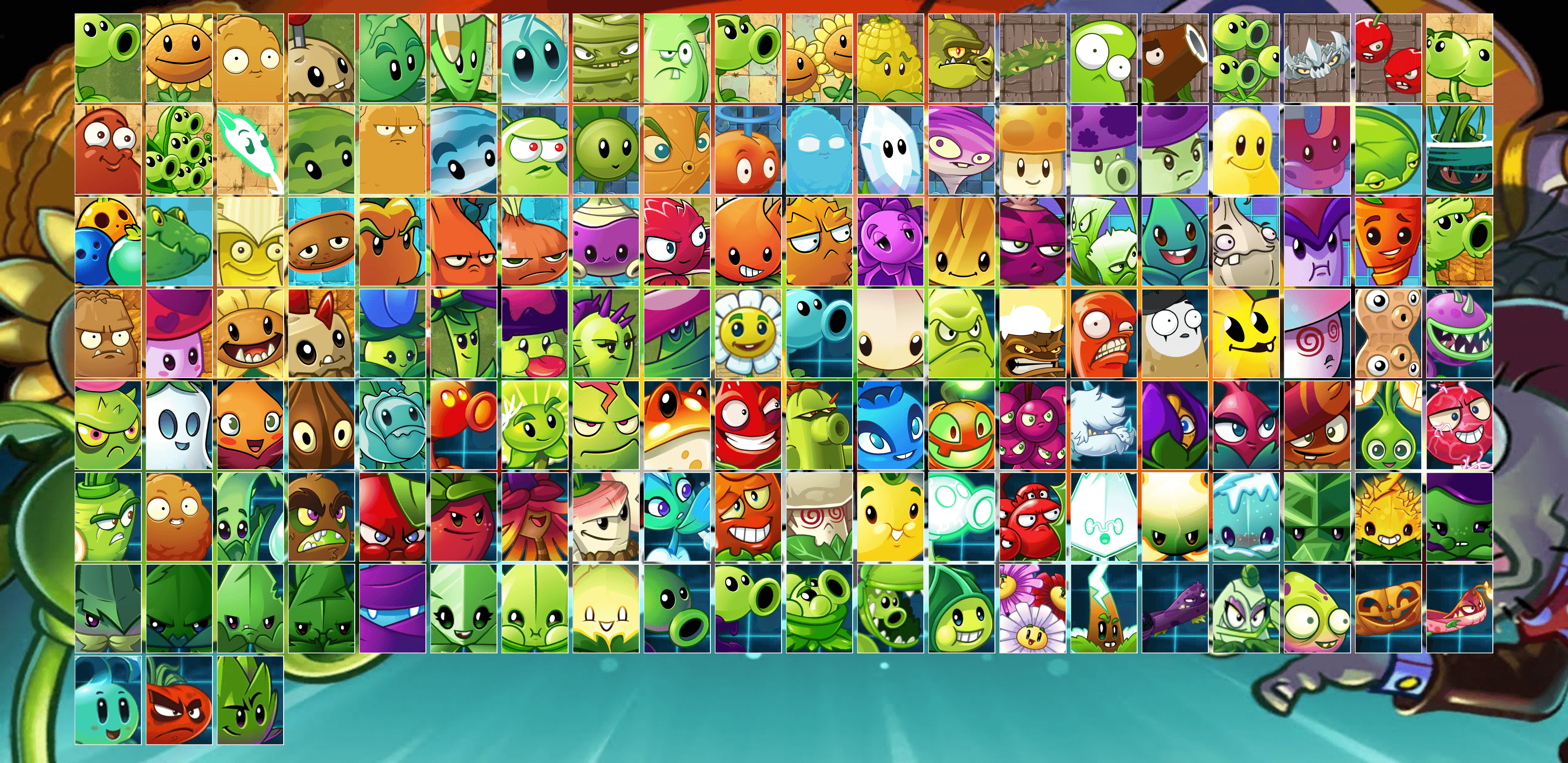
Understanding the diverse range of plants available in Plants vs. Zombies 2 is crucial for developing effective strategies against the various zombie types encountered throughout the game. Each plant possesses unique features, powers, pros, and cons that players must consider when building their defenses. By leveraging the strengths of each plant type and strategically deploying them based on the challenges faced in each level, players can enhance their gameplay experience and achieve victory over the zombie hordes.
For the best gaming experience, play Plants vs Zombies 2 on BlueStacks! If you are new to the game, check out our Beginner’s Guide to Plants vs. Zombies 2.








